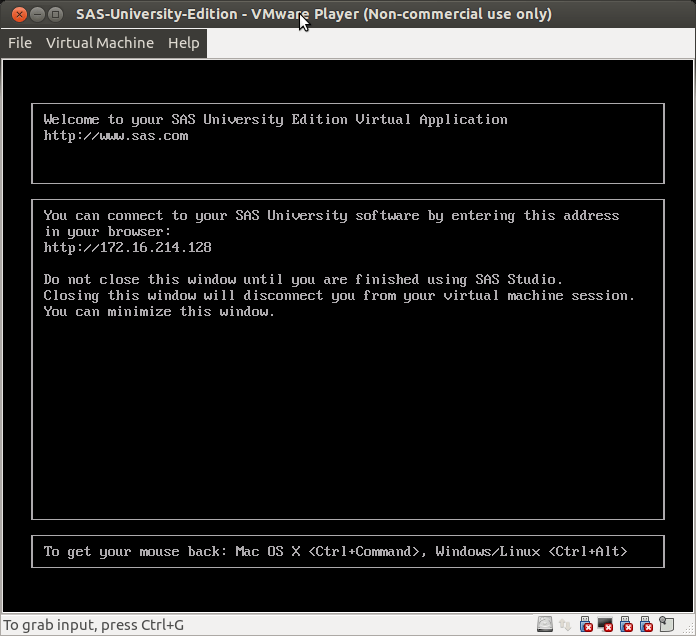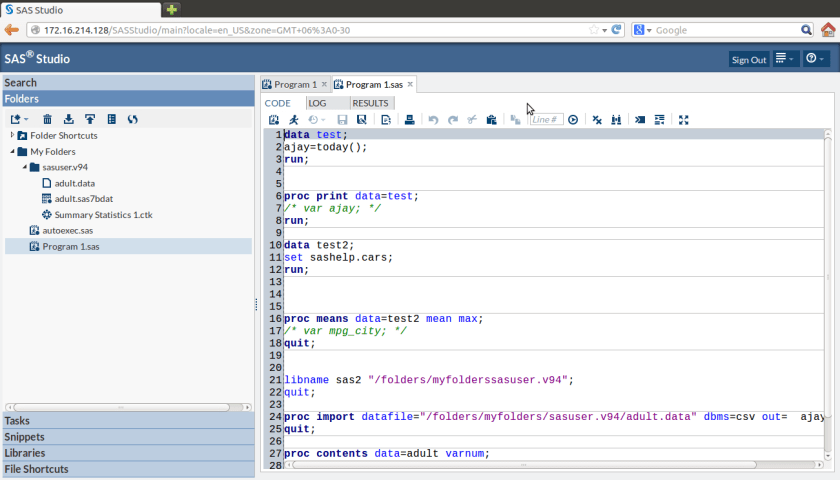I recently managed to get a copy of SAS University Edition. 
1) Here were some problems I had to resolve- The download size is 1.5 gb of a zipped file ( a virtual machine image). Since I have a internet broadband based in India it led to many failed attempts before I could get it. The unzipped file is almost 3.5 gb. You can get the download file here http://www.sas.com/en_us/software/university-edition/download-software.html.
Secondly the hardware needed is 64 bit, so I basically upgraded my Dell Computer. This was a useful upgrade for me anyway.
2) You can get an Internet Download Manager to resume downloading in case your Internet connection has issues downloading a 1.5 gb file in one go. For Linux you can see http://flareget.com/download/ 
and for Windows http://www.internetdownloadmanager.com/download.html
3) I chose VM Player for Linux because I am much more comfortable with VM Player ( Desktop free version). I got that from here ~200 MB https://my.vmware.com/web/vmware/free#desktop_end_user_computing/vmware_player/6_0
4) Finally I installed VM Player and Open an Existing Virtual Machine to boot up SAS University Edition 
I was able to open the SAS Studio at the IP Address provided.
5)
I downloaded a Dataset from this collection here
https://archive.ics.uci.edu/ml/datasets/Adult
6) Then I uploaded it to within the SAS Studio System
7) Lastly I was able to run some basic commands
I was really impressed by the enhancements made to the interface, the ability to search command help through a drop down, the color coded editor and of course the case insensitive SAS language (though I am not a fan of the semi colon I loved using Ctrl + / for easy commenting and uncommenting)
- For a SAS turned R turned SAS coder- here are some views
- SAS has different windows for coding, log and output. R generally has one
- SAS is case insensitive while R is case sensitive. This is a blessing especially for variable and dataset names.
- SAS deals with Datasets than can be considered the same as Rs Data Frame.
- R’s flexibility in data types is not really comparable to SAS as it is quite fast enough.
- SAS has a Macro Language for repeatable tasks
- SQL is embedded within SAS as Proc SQL and in R through sqldf package
- You have to pay for each upgrade in SAS ecosystem. I am not clear on the transparent pricing, which components does what and whether they have a cloud option for renting by the hour. How about one web page that lists product description and price.
- SAS University Edition is a OS agnostic tool, for that itself it is quite impressive compared to say Academic Edition of Revolution Analytics.
- R is object oriented and uses [] and $ notation for sub objects. SAS is divided into two main parts- data and proc steps, and uses the . notation and var system
- SAS language has a few basic procs but many many options.
- How good a SAS coder you are often depends on what you can do in data manipulation in SAS Data Step
- Graphics is still better in R ggplot. But the SAS speed is thrilling.
- RAM is limited in the University Edition to 1 GB but I found that still quite fast. However I can upload only a 10 mb file to the SAS Studio for University Edition which I found reasonable for teaching purposes.











